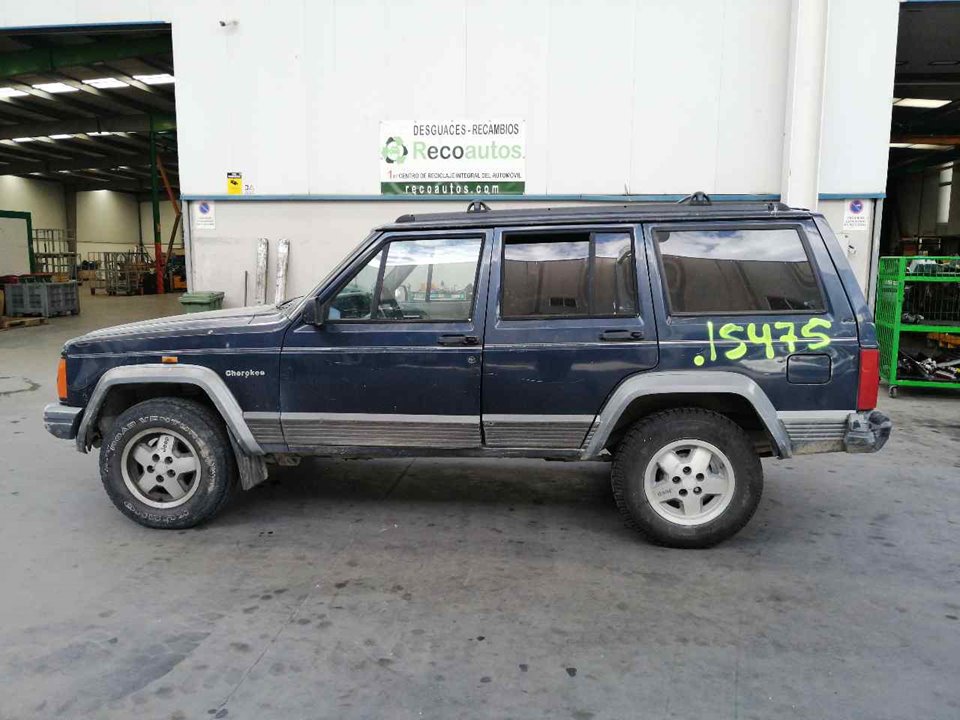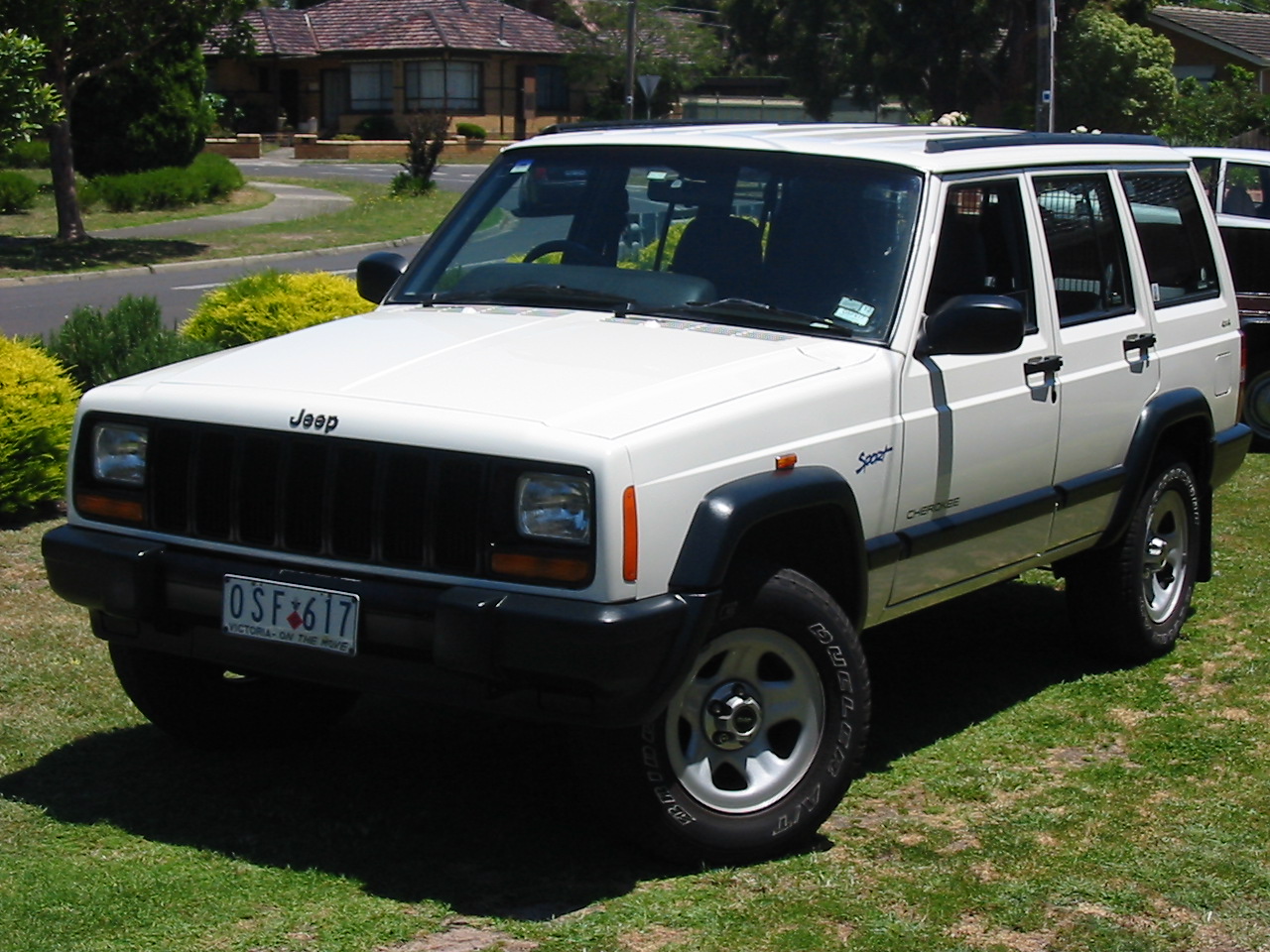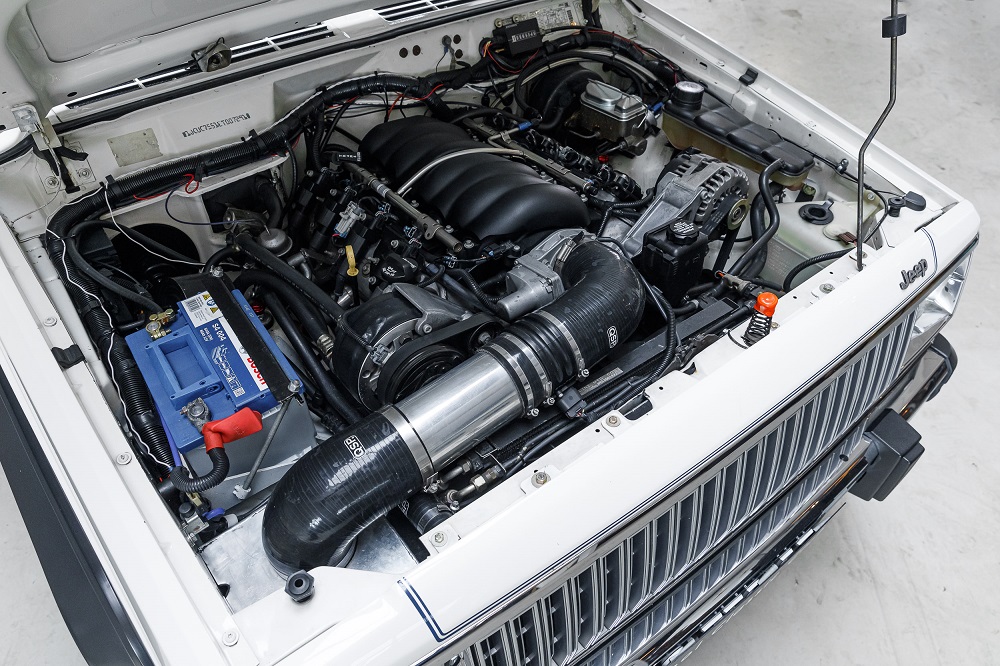Turbocharge A Cherokee XJ: Unleashing the Beast Within types.truckstrend.com
Introduction
The Jeep Cherokee XJ, with its iconic boxy lines, legendary off-road capability, and robust 4.0-liter inline-six engine, has cemented its place as a beloved classic among enthusiasts. However, for all its virtues, the stock XJ can sometimes feel a bit underpowered, especially when tackling steep trails, hauling heavy loads, or cruising at highway speeds with larger tires. Enter the world of forced induction, specifically turbocharging. Turbocharging a Cherokee XJ isn’t just about adding more power; it’s about transforming its character, unlocking a new level of performance that can make your aging workhorse feel like a modern powerhouse. This comprehensive guide will delve into the intricacies of turbocharging your XJ, covering everything from the benefits and components to the installation process, critical considerations, and what to expect from this exhilarating upgrade.
Turbocharge A Cherokee XJ: Unleashing the Beast Within
Why Turbocharge Your XJ? The Power Beyond Stock
The primary motivation for turbocharging any engine is simple: more power. For the Cherokee XJ, this translates into several compelling advantages:
- Significant Horsepower and Torque Gains: A well-tuned turbo system can easily add 50-100% more horsepower and torque to your 4.0L engine. This means quicker acceleration, effortless merging on highways, and the ability to conquer challenging obstacles with newfound grunt.
- Improved Off-Road Performance: Extra torque at lower RPMs is invaluable for rock crawling and tackling steep inclines, reducing the need for excessive throttle input and minimizing wear on the drivetrain.
- Enhanced Towing and Hauling Capability: If your XJ serves as a utility vehicle, the added power makes light work of towing trailers or carrying heavy gear, reducing strain on the engine.
- Overcoming Larger Tire Penalties: Many XJ owners upgrade to larger tires, which inherently rob power. Turbocharging effectively negates this power loss, restoring or even exceeding original performance levels.
- Bragging Rights: Let’s be honest, there’s a certain cool factor in telling someone your classic XJ is turbo-charged!

Understanding the Basics of Turbocharging
Before diving into the specifics of an XJ build, it’s crucial to grasp how a turbocharger works. A turbocharger is essentially an air pump driven by your engine’s exhaust gases.
- Turbine: Exhaust gases exiting the engine are directed through a turbine housing, spinning a turbine wheel.
- Compressor: This turbine wheel is connected by a shaft to a compressor wheel located in a separate housing.
- Forced Induction: As the compressor wheel spins, it draws in ambient air, compresses it, and forces it into the engine’s intake manifold.
- More Air = More Power: By cramming more air (and thus more oxygen) into the cylinders, the engine can burn more fuel, resulting in a significant increase in power output. An intercooler is often used to cool this compressed air, making it denser and further increasing power while reducing the risk of pre-ignition.

Is Your XJ a Good Candidate? Foundation First

Turbocharging puts additional stress on an engine. Therefore, the health of your XJ’s 4.0L engine is paramount.
- Engine Health: A healthy 4.0L with good compression, no excessive oil consumption, and proper maintenance records is a must. If your engine is tired, consider a rebuild or a fresh long block before adding a turbo. The 4.0L is renowned for its durability, and with sensible boost levels (typically 6-8 PSI on stock internals), it can handle forced induction surprisingly well.
- Transmission: The stock AW4 automatic transmission is quite robust and can often handle moderate power increases, but for higher boost or aggressive driving, an upgraded torque converter and a larger transmission cooler are highly recommended. Manual transmission XJs (AX-15) are also viable candidates but may require clutch upgrades.
- Driveline: While not immediately critical for low-boost applications, consider upgrading U-joints, driveshafts, and potentially axle shafts if you plan on serious off-roading or very high power levels.
- Cooling System: The stock cooling system is barely adequate for a naturally aspirated 4.0L in some conditions. Turbocharging generates more heat, so a heavy-duty radiator, upgraded water pump, and potentially an auxiliary fan are essential.
Key Components of an XJ Turbo Kit
A complete turbocharging system involves more than just the turbo itself. Here’s a breakdown of the essential components:
- Turbocharger Unit: The heart of the system. Sizing is crucial for optimal performance (e.g., Garrett GT35, Holset HX35 are popular choices for the 4.0L).
- Exhaust Manifold: A custom or modified manifold designed to mount the turbocharger and efficiently direct exhaust gases to the turbine.
- Intercooler: Cools the compressed air before it enters the engine, increasing air density and preventing detonation. Front-mounted intercoolers are common.
- Piping (Hot and Cold Side): Connects the turbo to the intercooler, and the intercooler to the throttle body.
- Wastegate: Controls boost pressure by diverting excess exhaust gas away from the turbine. Internal (within the turbo) or external units are available.
- Blow-Off Valve (BOV): Releases pressure in the intake system when the throttle closes, preventing compressor surge and protecting the turbo.
- Fuel System Upgrades:
- Larger Fuel Injectors: To deliver enough fuel for the increased air.
- High-Flow Fuel Pump: To supply sufficient fuel pressure and volume.
- Fuel Pressure Regulator (Optional): For fine-tuning fuel delivery.
- Engine Management System (EMS) / ECU Tuning: This is arguably the most critical component. The stock ECU cannot compensate for forced induction. Options include:
- Piggyback Systems: Modify existing ECU signals.
- Standalone ECUs: Replace the stock ECU entirely, offering complete control over fuel and ignition. This is the preferred method for reliability and optimal tuning.
- Oil Feed and Return Lines: The turbocharger needs a constant supply of clean engine oil for lubrication and cooling. A dedicated oil return line to the oil pan is also necessary.
- Exhaust System: A larger diameter, less restrictive exhaust system (typically 3-inch) is needed to efficiently evacuate spent gases from the turbo.
- Gauges: Boost gauge, wideband air/fuel ratio (AFR) gauge, and possibly an exhaust gas temperature (EGT) gauge are crucial for monitoring engine health and tuning.
The Turbocharging Process: A Step-by-Step Overview
Turbocharging an XJ is a complex project, suitable for experienced DIY mechanics or best left to professional shops specializing in forced induction.
- Planning & Research: Define your power goals, budget, and research available kits or custom solutions. Source all components.
- Engine Preparation: Perform a compression test. Address any leaks, tune-up items, or maintenance. Consider refreshing seals and gaskets. Install an upgraded cooling system if not already done.
- Manifold & Turbo Mounting: Remove the stock exhaust manifold. Install the new turbo manifold and mount the turbocharger unit. This often requires fabricating or modifying motor mounts or firewall clearances.
- Intercooler Plumbing: Mount the intercooler in the front of the vehicle (often behind the bumper). Route the necessary charge pipes from the turbo to the intercooler and from the intercooler to the throttle body. This may involve cutting and welding.
- Oil & Water Lines: Tap into the engine’s oil pressure for the turbo’s oil feed line and create a gravity-fed oil return line to the oil pan (usually above the oil level). Some turbos are water-cooled and require tapping into the cooling system.
- Fuel System Upgrade: Replace the stock fuel pump with a high-flow unit. Install larger fuel injectors.
- Engine Management Installation: Install the chosen EMS (standalone or piggyback). This involves wiring the new ECU or connecting the piggyback unit to the existing wiring harness.
- Exhaust Modification: Connect the turbo’s downpipe to a new, larger diameter exhaust system.
- Gauges Installation: Mount and wire your boost, AFR, and EGT gauges in a visible location.
- Initial Checks & Leak Test: Double-check all connections, clamps, and hoses. Pressurize the intake system to check for boost leaks.
- Tuning: This is the most critical step. A professional tuner with experience in forced induction is highly recommended. They will calibrate the EMS to optimize fuel delivery, ignition timing, and boost control for safe and powerful operation on a dynamometer. Do NOT skip professional tuning.
- Break-In & Monitoring: Drive cautiously, monitor all gauges closely, and be prepared for further tuning adjustments.
Important Considerations & Potential Challenges
- Engine Longevity: While the 4.0L is robust, pushing it too hard (high boost, poor tuning) will lead to premature failure. Stick to conservative boost levels (6-8 PSI) for stock internals. For higher power, forged pistons, connecting rods, and a stronger crankshaft are necessary.
- Heat Management: Turbocharged engines generate significantly more heat. Upgraded cooling systems, oil coolers, and potentially hood vents are essential.
- Fueling Requirements: You’ll need premium (high octane) fuel to prevent pre-ignition (knocking) under boost.
- Transmission & Driveline Upgrades: As mentioned, these components will experience increased stress. Plan for future upgrades if you aim for high power or aggressive use.
- Emissions & Legality: Turbocharging an engine is often not emissions-compliant and may not be legal for street use in some states/countries. Check local regulations.
- Noise: Turbochargers, wastegates, and blow-off valves add unique sounds to your XJ.
- Cost: This is not a cheap modification. Budget for quality components, tools, and professional tuning.
- Skill Level Required: This is an advanced project. If you’re not comfortable with complex wiring, fabrication, and engine mechanics, seek professional assistance.
Tips for a Successful Turbo XJ Build
- Start Low, Go Slow: Begin with a conservative boost level and gradually increase it once everything is proven reliable.
- Prioritize Tuning: A good tune is more important than expensive parts. It protects your engine and unlocks optimal performance.
- Monitor Everything: Install and pay attention to your boost, AFR, and EGT gauges. They are your engine’s voice.
- Upgrade Supporting Components: Don’t skimp on cooling, fuel delivery, or driveline strength. They are just as crucial as the turbo itself.
- Quality Over Cost: Invest in high-quality components. Cheap parts often lead to expensive failures.
- Join Forums & Communities: Learn from others who have successfully turbocharged their XJs.
Estimated Price Table for Turbocharge A Cherokee XJ
Please note that these are estimated prices and can vary wildly based on brand, new vs. used parts, custom fabrication needs, labor rates, and market availability. A complete, high-quality build can easily exceed $10,000.
| Component Category | Estimated Price Range (USD) | Notes |
|---|---|---|
| Turbocharger Unit | $500 – $2,000+ | Garrett, Holset, BorgWarner, or reputable Chinese turbos. Depends on size and brand. |
| Exhaust Manifold | $300 – $1,500+ | Cast iron, tubular, custom fabricated. |
| Intercooler & Piping | $300 – $1,000+ | Core size, custom fabrication for mounting/routing. |
| Wastegate & BOV | $200 – $800+ | External wastegate generally more expensive but better control. |
| Fuel System Upgrades | $400 – $1,200+ | Injectors ($300-600), High-flow Fuel Pump ($100-300), FPR ($100-300). |
| Engine Management (ECU) | $800 – $3,000+ | Piggyback (e.g., AEM FIC) vs. Standalone (e.g., Haltech, Megasquirt, Holley EFI). |
| Oil Feed/Return Lines | $100 – $300 | Braided stainless lines, fittings, oil pan bung. |
| Exhaust System | $300 – $800+ | 3" downpipe and cat-back system. Custom fabrication may be needed. |
| Gauges | $200 – $600 | Boost, Wideband AFR, EGT. |
| Cooling System Upgrades | $300 – $800+ | Heavy-duty radiator, electric fans, water pump, transmission cooler. |
| Supporting Mods | $200 – $500+ | Boost controller, silicone couplers, T-bolt clamps, vacuum lines, sensors, oil filter relocation. |
| Professional Tuning | $500 – $1,500+ | Essential for reliability and performance. Dyno time included. |
| Professional Installation | $2,000 – $5,000+ | Varies wildly by shop, complexity, and fabrication needed. |
| Total Estimated Cost | $6,000 – $18,000+ | This range covers DIY with good parts to full professional build with premium components. |
Frequently Asked Questions (FAQ)
Q1: Can I turbocharge a completely stock XJ 4.0L engine?
A1: Yes, many enthusiasts successfully run low boost (6-8 PSI) on a healthy stock 4.0L with proper tuning and supporting modifications. However, exceeding this or having a poor tune will significantly reduce engine life.
Q2: How much power can I gain from turbocharging my XJ?
A2: On a stock 4.0L with low boost, you can expect gains of 50-80% over stock, pushing horsepower well into the 200-300 HP range at the wheels. With a built engine and higher boost, figures over 400 HP are achievable.
Q3: Do I need to upgrade my transmission?
A3: For moderate boost levels, the stock AW4 automatic transmission can often suffice if it’s healthy and coupled with a good transmission cooler. For higher power or aggressive use, an upgraded torque converter and valve body are highly recommended. Manual AX-15s may need a stronger clutch.
Q4: What kind of fuel will I need?
A4: You will absolutely need to run premium (higher octane) gasoline to prevent detonation and protect your engine under boost. E85 is an option for even higher power but requires specific fuel system components and tuning.
Q5: Is turbocharging my XJ legal for street use?
A5: In many jurisdictions, modifying your vehicle’s emissions control system (which turbocharging often entails) is illegal for street use. Check your local and state/provincial regulations regarding vehicle modifications and emissions.
Q6: How much does it cost to turbocharge an XJ?
A6: As detailed in the table above, costs can range from $6,000 for a well-planned DIY build with quality components to over $18,000 for a fully professional installation with a built engine and premium parts.
Conclusion
Turbocharging a Jeep Cherokee XJ is not a project for the faint of heart or the light of wallet. It demands significant planning, technical knowledge, and a commitment to quality components and professional tuning. However, for those willing to undertake the challenge, the rewards are immense. The transformation of your beloved XJ from a capable but somewhat anemic off-roader to a true powerhouse is an exhilarating experience. The added horsepower and torque will not only enhance its off-road prowess but also make it a more enjoyable and confident daily driver or long-distance cruiser. When done correctly, turbocharging can breathe new life into your classic XJ, truly unleashing the beast within and ensuring it remains a formidable force on and off the pavement for years to come.
